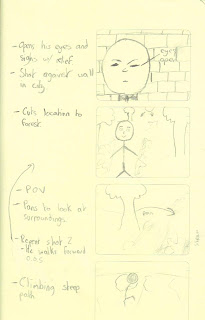Considering how good Michel Gondry's films tend to look, and how strong a visual style he has as a director, it's surprising to read
an article in American Cinematographer with quotes from the DOP of Michel Gondry's
Eternal Sunshine of the Spotless Mind, Ellen Kuras, which explains how difficult - not maliciously, but for technical and stylistic reasons - he made her job.
According to the article, Gondry and Kuras began the (pre-)production production process with different ideas about practical ways of shooting the film. Because the film's narrative frequently switches between reality and dreams/memories, Gondry apparently "wanted to shoot the entire movie in practical locations, and he would have preferred... to shoot everything in available light", because "he felt that the more real the film looked, the more you would believe it when the memories melted into reality" and "it was important for him not to get overburdened by the lighting". In contrast, Kuras apparently argued: "even on a documentary, I wouldn't shoot exclusively with available light" (although, from my understanding, documentaries in the USA tend to involve more film-production style techniques, such as lighting).
Gondry's films usually show off a huge amount of technical competence, as I've already suggested in my earlier blog post about his video
Knives Out. Kuras states in the article that for
Eternal Sunshine, he wanted to call "back to early cinema, where magicians were using live-action practical effects in order to change time and space", rather than relying on computer processing. In contrast to the modern tendency to use computer processing to produce smooth and transparent effects, in one scene Gondry "wanted [Kuras] to shake the camera so we could see it was a handheld effect in camera, as opposed to a locked-off superimposition or double exposure".
When I wrote about
Knives Out, I mentioned that the video's lighting appears to have needed a lot of attention to pull off, and Kuras tells us this was also the case with
Eternal Sunshine. While "most of the picture was filmed in practical locations", "some studio work was unavoidable".
This was complicated because, as with
Knives Out, Gondry decided to use "two [although
Knives Out only uses one camera] handheld cameras filming near-360-degree coverage most of the time" - and to make life even more difficult, while one scene in the character Joel's apartment was shot on-set, but Gondry "wanted to recreate the conditions we had encountered on location". In the article, Kuras says that, once the set was built, she was told "all of the ceilings have been nailed down, so you won't be able to light from above" - a cinematographer's worst nightmare considering that most scenes used two cameras covering 360˚.
In one way, the article terrifies me, because it's made me realise how difficult cinematography can be, even on big-budget films. But in a way, the article also encourages me, because Kuras was able to create a very strong film visually, while relying throughout the film on natural and/or practical light sources to light scenes.



















